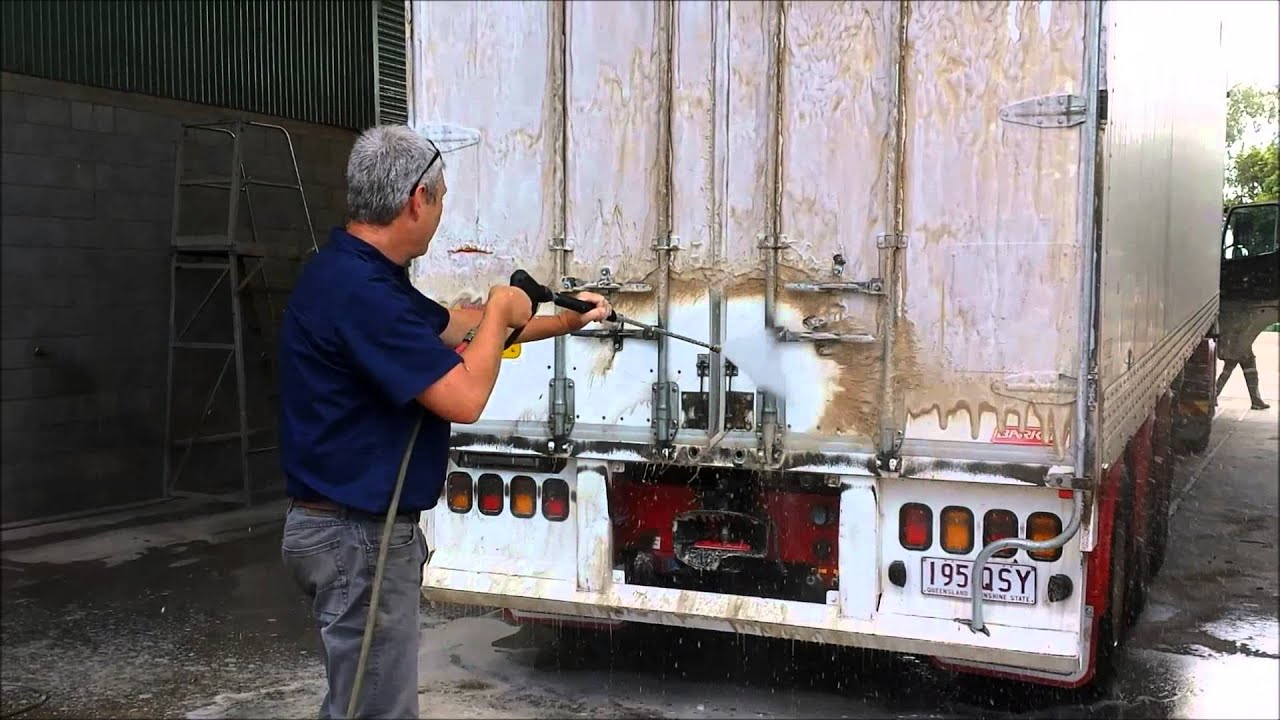
Utility and flatbed trailers are workhorses. Whether you’re hauling landscaping equipment, construction materials, motorcycles, or livestock, your trailer takes a beating from dirt, grease, road salt, mud, and grime. Over time, that buildup can damage surfaces, promote rust, and make your trailer look neglected.
The good news? Pressure washing is one of the fastest and most effective ways to keep your trailer clean, safe, and in good condition. In this guide, we’ll walk you through the tools, steps, and techniques to pressure wash your utility or flatbed trailer the right way. 🧼🛻
🧠 Why Regular Cleaning Is Important
Your trailer is constantly exposed to:
- Mud and dirt from construction sites or trails
- Salt and de-icer residue from winter roads
- Oil, fuel, and hydraulic fluid spills
- Animal waste if used for livestock
- Plant debris or mulch if used for landscaping jobs
Left unchecked, this grime can:
- Weaken metal
- Deteriorate wood decking
- Increase the risk of rust
- Damage the wheel wells or axle area
Pressure washing every few months not only makes your trailer look better but also helps it last longer. 💪
🧰 What You’ll Need
Here’s your equipment checklist:
- Pressure washer (2,000–3,000 PSI recommended)
- 15° (yellow) or 25° (green) nozzle
- Degreaser or trailer-safe cleaning solution
- Scrub brush or broom
- Extension wand (optional)
- Wheel chocks (for stability)
- Garden hose and bucket
- Protective gear (gloves, goggles, boots)
- Tarps or covers (if protecting a surrounding area)
🧽 Bonus tip: If your trailer is used for food or animals, choose a biodegradable and non-toxic detergent.
Browse Amazon Here For Top Rated Power Washers And Accessories
🛠️ Step-by-Step: How to Pressure Wash a Trailer
1️⃣ Park in the Right Spot
- Choose a flat, open area with good drainage
- Avoid washing on grass, where chemicals can seep in
- Place wheel chocks or blocks to prevent movement during cleaning
If you’re near a building or vehicle, protect surrounding surfaces with plastic sheeting or tarps.
2️⃣ Clear Off Loose Debris
- Sweep off leaves, dirt, or trash
- Remove tie-down straps or cargo that might get in the way
- Use a scraper to remove any hardened mud or caked-on grease
3️⃣ Pre-Rinse with Water
Use a garden hose or a wide-angle nozzle to:
- Wet the entire trailer
- Soften any dirt or grime buildup
- Rinse out corners and hidden areas
💦 Don’t skip this step—it helps reduce splatter and speeds up the deep cleaning later.
4️⃣ Apply Degreaser or Soap
Use a degreaser or detergent designed for:
- Automotive equipment
- Aluminum or painted steel
- Wood decks (if applicable)
Spray the product evenly across:
- Floor and ramp
- Side rails
- Wheel wells and undercarriage
- Tongue and hitch area
Let it dwell for 5–10 minutes, but don’t let it dry.
5️⃣ Start Pressure Washing
Attach your 15° or 25° nozzle and work methodically:
- Start at the top rails and work downward
- Maintain a distance of 12–18 inches from the surface
- Use steady, side-to-side sweeping motions
- Pay attention to corners, tie-down rings, hinges, and lights
🎯 For greasy areas like the axle or ramp hinges, use short, direct bursts with the yellow tip.
6️⃣ Clean the Undercarriage
Use your wand or extension to spray underneath the trailer:
- Axles
- Leaf springs
- Brake components
- Underside of decking
If accessible, use a pivoting undercarriage wand to make this easier.
7️⃣ Rinse Thoroughly
Once you’ve cleaned all areas:
- Rinse the trailer from top to bottom
- Check for missed spots or streaks
- Make sure all soap and degreaser are completely washed away
Let the trailer air dry, or towel off key areas to avoid water spots.
🧼 Optional: Detailing and Protection
Once your trailer is dry, you may want to:
- Apply a metal polish to side rails or toolboxes
- Coat exposed steel with rust inhibitor or WD-40
- Use a wood sealant on wood deck boards
- Repaint scuffed areas with trailer-safe paint
🛠️ These extra steps help keep your trailer looking sharp and lasting longer.
🗓️ How Often Should You Pressure Wash Your Trailer?
| Usage Type | Recommended Cleaning |
|---|---|
| Weekly hauling or worksite use | Every 2–4 weeks |
| Occasional use or storage | Every 2–3 months |
| After winter roads | Immediately in spring (to remove salt) |
| After livestock or manure hauling | After each use 🐄 |
❌ Mistakes to Avoid
- ❌ Using high pressure near seals or brake components
- ❌ Spraying directly into light fixtures or electric plugs
- ❌ Letting degreaser dry on hot metal
- ❌ Ignoring the underside of the trailer
💬 Final Thoughts
A clean trailer is a safer, longer-lasting trailer. With just a pressure washer, some degreaser, and a free afternoon, you can restore your flatbed or utility trailer to a professional-looking state.
So whether you’re hauling gravel, goats, or gear, keep that trailer looking and performing its best. Your clients—and your equipment—will thank you. 🚛💦🧽
Browse Amazon Here For Top Rated Power Washers And Accessories



